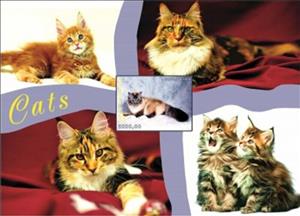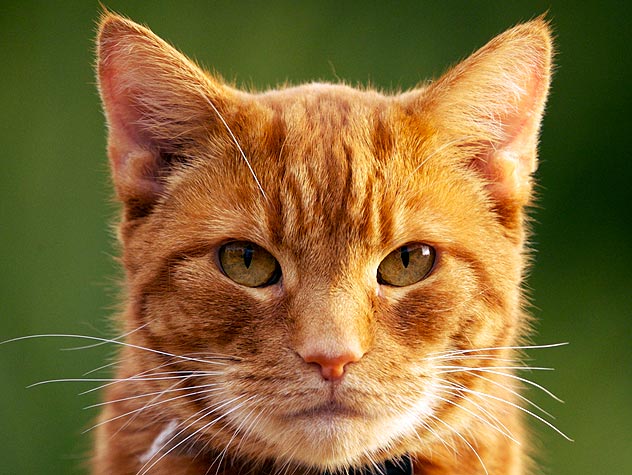Souvenir Sheet: Cats (Somaliland 2015)
Cats (Somaliland 2015)
01 January (Somaliland ) within release Cats (2015) goes into circulation Souvenir Sheet Cats face value 5,000 Somaliland shilling
| Souvenir Sheet Cats in catalogues | |
|---|---|
| Colnect codes: | Col: RS 2015-21 |
Souvenir Sheet is square format.
Genuine issued Somaliland stamps ended in 1960 when they gained their independence from being a British Protectorate and became part of Somalia. All stamps used for postage in Somaliland are Somalia stamps from July 1, 1960 forward. Somaliland has no authority to issue their own stamps and has no postal office since 1991 due to conflict with Somalia. This counterfeit is produced in Moscow, Russia and distributed by Russian and Eastern European counterfeit stamp dealers.Also in the issue Cats (2015):
- Souvenir Sheet - Cats face value 5,000;
- Souvenir Sheet - Cats face value 5,000;
- Souvenir Sheet - Cats face value 5,000;
- Souvenir Sheet - Cats face value 5,000;
- Souvenir Sheet - Cats face value 5,000;
- Souvenir Sheet - Cats face value 5,000;
- Souvenir Sheet - Cats face value 5,000;
- Souvenir Sheet - Cats face value 5,000;
- Souvenir Sheet - Cats face value 5,000;
- Souvenir Sheet - Cats face value 5,000;
- Souvenir Sheet - Cats face value 5,000;
- Souvenir Sheet - Cats face value 5,000;
- Souvenir Sheet - Cats face value 5,000;
- Souvenir Sheet - Cats face value 5,000;
- Souvenir Sheet - Cats face value 5,000;
|
Data entry completed
50%
|
|
|---|---|
| Souvenir Sheet Cats in digits | |
| Country: | Somaliland |
| Date: | 2015-01-01 |
| Emission: | Illegal |
| Format: | Souvenir Sheet |
| Face Value: | 5,000 Somaliland shilling |
Souvenir Sheet Cats it reflects the thematic directions:
Animals are multicellular, eukaryotic organisms of the kingdom Animalia (also called Metazoa). All animals are motile, meaning they can move spontaneously and independently, at some point in their lives. Their body plan eventually becomes fixed as they develop, although some undergo a process of metamorphosis later on in their lives. All animals are heterotrophs: they must ingest other organisms or their products for sustenance.
The domestic cat (Latin: Felis catus) is a small, typically furry, carnivorous mammal. They are often called house cats when kept as indoor pets or simply cats when there is no need to distinguish them from other felids and felines. Cats are often valued by humans for companionship and for their ability to hunt vermin. There are more than 70 cat breeds, though different associations proclaim different numbers according to their standards.
Cats are similar in anatomy to the other felids, with a strong flexible body, quick reflexes, sharp retractable claws, and teeth adapted to killing small prey. Cat senses fit a crepuscular and predatory ecological niche. Cats can hear sounds too faint or too high in frequency for human ears, such as those made by mice and other small animals. They can see in near darkness. Like most other mammals, cats have poorer color vision and a better sense of smell than humans. Cats, despite being solitary hunters, are a social species and cat communication includes the use of a variety of vocalizations (mewing, purring, trilling, hissing, growling, and grunting), as well as cat pheromones and types of cat-specific body language.


